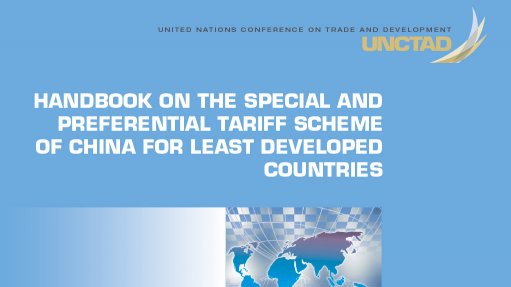
China started to grant duty-free treatment to LDCs with diplomatic relations with China in 2001. In China’s customs tariff schedules (that is, the Customs Tariff of Import and Export of the People’s Republic of China), “duty-free” is referred to as “special and preferential tariff treatment for least developed countries” (herein after referred to as the “LDC scheme”).
In response to the WTO decision on DFQF for LDC exports adopted at the sixth Ministerial Conference in Hong Kong (China) in December 2005, China announced at the United Nations High-Level Event on Millennium Development Goals held in 2008 that it would increase gradually the coverage of its LDC scheme to reach 95 per cent of the country’s total tariff lines. This goal was achieved in two steps within three years between 2010 and 2013. On 1 July 2010, as a first step, duty-free treatment to LDCs applied to 60 per cent of China’s import tariff lines (that is, 4,762 out of 7,936 tariff lines). The second step was taken on 1 July 2013 when China granted duty-free to more imported products from LDCs, thus covering 95 per cent of China’s total tariff lines, or 7,381 out of 8,243.
As a further step to help boost LDC exports to China, in March 2013 at the BRICS 1 Summit held in South Africa, China announced its decision to increase its duty-free coverage to 97 per cent by 2015. The decision was implemented on 1 January 2015. Thus, China became the first developing country in WTO to fully meet the tariff line coverage requirement set out in the sixth Ministerial Declaration.
According to the latest data released by China to WTO in October 2011, 98.7 per cent of all imports from LDCs, with a value of $42.2 billion in 2010, were covered by the scheme. The enlargement of duty-free coverage to 97 per cent of the tariff lines is expected to benefit the exports of LDCs.
Report by Unctad